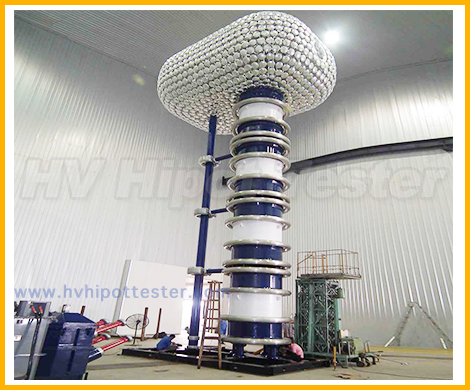

 pm01@hvhipottester.com
pm01@hvhipottester.com  pm02@hvhipottester.com
pm02@hvhipottester.com  8618986157274
8618986157274  +86 18986157274
+86 18986157274  live:1379417129
live:1379417129 1379417129
1379417129 Difference Of VLF Device and Series Resonant Device
VLF devices (very low frequency high voltage generators) differ significantly from traditional series resonant devices in terms of technical principles and application scenarios, and cannot be simply classified as "slow" series resonant devices. The following are key differences and feature analysis:
· VLF equipment : Uses 0.1Hz ultra-low frequency AC voltage for withstand voltage test, achieving the equivalent of power frequency withstand voltage effect by reducing the frequency, while greatly reducing the size and weight of the equipment 13. Its design focuses on ultra-low frequency waveform generation rather than resonant matching.
· Series resonant device : Based on the resonant characteristics of inductance and capacitance (30-300Hz), high voltage output is achieved through frequency modulation or inductance modulation, and efficiency is improved by relying on circuit resonance conditions.
· VLF equipment : Mainly used for insulation withstand voltage tests of medium and low voltage cables, generators and other equipment, especially suitable for occasions that cannot withstand high power frequency currents.
· Series resonant equipment : Commonly used for AC withstand voltage testing of high voltage cables (such as 110kV and above), using resonance conditions to reduce power capacity requirements and improve test economy.
· Some literature or manufacturers may include VLF equipment in the category of “series resonant withstand voltage test equipment”, but there are significant differences between the two in actual technical implementation. For example, the core of VLF devices is the ultra-low frequency signal source, while the core of series resonant devices is the resonant circuit matching.
· As the demand for high-voltage equipment testing increases, frequency-modulated series resonant equipment (30-300 Hz) has gradually become mainstream due to its high degree of automation and excellent efficiency.
· VLF equipment still maintains its advantages in the medium and low voltage fields, especially in terms of portability and low frequency adaptability.
In summary, VLF devices and series resonant devices belong to different technical paths. The former is based on ultra-low frequency characteristics, while the latter relies on the resonance principle to achieve efficient boosting. The relationship between the two is not simply "fast" or "slow".